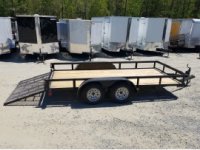jdom84
Gold Member
I just finished up filling all 4 tires on my little xj2025 tractor and just thought I would share if anyone cares to know...
the front tires hold 5.75 gallons each and the rears hold 17-18 gallons each.
Total weight ~ 400lbs
the front tires hold 5.75 gallons each and the rears hold 17-18 gallons each.
Total weight ~ 400lbs
